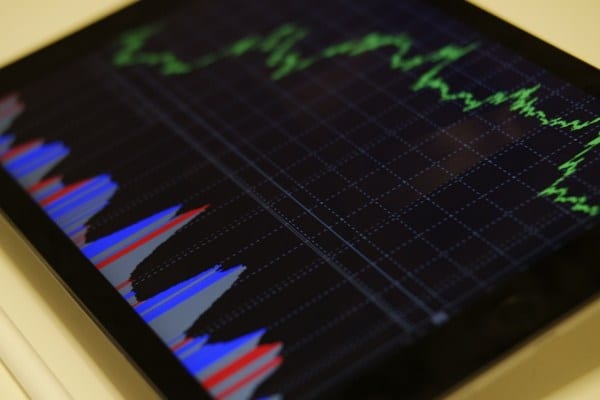Data analysis is the field that empowers us and provides us the necessary means to study data and find trends and patterns in it that could be useful to us. Since data generation is reaching new highs every day, data analysis is more relevant than ever!
Alarmingly, 95% of businesses fail to manage unstructured data appropriately due to below-par data analysis, as suggested by Forbes. So, as you are working with data and analyzing it to make decisions, the question is how measurable is data analysis? Is it quantitative or qualitative?
The short and concise answer is:
Data analysis is quantitative. Since data analysis revolves around mathematical and statistical tools and concepts, it needs to be fed with data that has some absolute meaning and is not merely based upon characteristics.
Aaron Levenstein, a notable Business Professor at Baruch College, once said,
“Statistics are like bikinis. What they reveal is suggestive, but what they conceal is vital.”
When we dive deeper into data analysis, we realize that there are basically two different perspectives to look at on how analytics could be performed: qualitatively or quantitatively.
While researchers use both approaches almost equally, it’s not the same case when it comes to data analysts, as they end up using one approach way more than the other.
Highly Recommended Next Articles:
5 Reasons Why Data Science is Important in Problem-Solving
Top 10 FREE Online Data Science Courses
A Beginners Guide to Data Visualization in Python
In this article, we’ll be taking a look at whether data analysis is qualitative or quantitative. Don’t worry if you’re not fully aware of these terms, as I’ll be explaining them as well. So, let’s dig in without any further ado.
However, before we start, let’s have some brief intros about qualitative and quantitative data analysis, so you don’t have any problem dealing with these terms later in the article.
Qualitative and Quantitative Data Analysis: Definitions & Examples
Qualitative Data Analysis
Qualitative data analysis is the process of data analysis employed when the data at hand is characteristic. Such data cannot be represented in numerical form and hence is also sometimes called meaningless since we can give it any value we want, relatively.
Qualitative data is made up of images, quotes, symbols, and so on. In essence, whatever data you cannot add or subtract to a numerical value is qualitative data. It has no numerical attributes, and it’s based upon certain approximations.
As a result, there’s no way we could derive any form of absolute meaning from such data.
For example: Imagine you have two pictures, a person asks you to find the average picture based on those two pictures. How do you do it? Well, you can’t. Taking average is something you can do with numerical data only, and since an image is a form of qualitative data, it’s impossible to find the average of two pictures.
Quantitative Data Analysis
Quantitative data analysis is the process of analyzing data having numerical attributes. Such data is completely based upon numbers and has an absolute meaning, unlike qualitative data.
You don’t need to characterize or approximate quantitative data as you did with qualitative. Dealing with quantitative data is much easier and a lot less complex. However, there might be a few more complexities involved in the analysis pipeline, which we’ll take a look at later in the article.
Let’s take another example to clear this as well:
Imagine your teacher provides you the results of a quiz taken in a class and asks you to analyze it. He wants you to plot the marks against the number of students who got the marks.
Since the data is quantitative, you could easily plot the marks on the x-axis, students’ frequency on the y-axis, and plot the points according to the data. That’s all, and you’d be done.
That’s quantitative data and how you deal with it. Now compare if your teacher had asked you to plot a bunch of pictures against the number of students. Pretty weird, right?
Is Data Analysis Qualitative or Quantitative? The rationale.
Data analysis is nothing but a way to study data to its depths to extract underlying information such as the hidden trends or patterns. Now, since we cannot do this job manually given that lots of data are available nowadays, we need to resort to tailor-made tools and techniques for data analysis purposes and do the job perfectly fine in much lesser time.
Since tools work on mathematical calculations and are based upon statistical, all the data needs to be converted into numerical forms before any program can read it. Even if it’s a picture, the program will see it as a 2d array of pixels.
So, at the end of the day, we’re doing everything quantitatively, and even the qualitative data is converted to quantitative when it comes to processing. All the calculations ranging from data cleaning to data validation use numerical attributes and not qualitative data.
However, don’t get me wrong, data analysis is qualitative as well, and it’s perfectly normal if you come across a data analysis job, including qualitative data.
You could deploy various analytical techniques to deal with such data; however, such problems are pretty rare to experience for a data analyst.
Most of the qualitative data analysis jobs are about exploratory research, which is why researchers and not data analysts usually undertake them. A bird’s eye view of their possible jobs is Content Analysis, Social Network Analysis, Conversation Analysis, and so on.
Data Analysis Pipeline
If we look at the process of data analysis from a broad perspective, it consists of two core activities: data preparation and then finally, data analysis. Let’s see what each of them consists of.
Data preparation
The first step in the process of data analysis pipeline is data preparation. It’s often the most important yet the most overlooked part of the process. It’s a crucial part of the analysis; if you fail to collect reliable data for your analysis, surely you won’t be arriving at the result you want.
According to an estimate,
“Data analysts spend 60 to 80 percent of their time on data preparation instead of analysis.”
The preparation includes multiple steps such as collecting the data in raw form from various sources, cleaning it, dealing with inconsistencies, missing information, and so on. Lastly, it also includes integrating the data and structuring it into a single, easy to access format.
Data Analysis
Since the data is prepared now and ready to be analyzed, the next step is the analysis part. This often consists of descriptive analysis, including basic measures like mean, median, mode, range, etc. They help a lot in providing a brief overview of the structure of data.
Even though these measures don’t point out anything since they’re relative, they tell you a lot about the data itself. However, you should think about which measure is relevant to your use-case before applying it first. Some may be useful for certain purposes, while some may not.
Example:
Consider you’ve posted a poll on your website, and to analyze the respondents, you decide to see the gender ratio. In this scenario, it would be a great idea to calculate the percentage of each gender. However, choosing to analyze the data by finding the mean or median would make no sense and by no means help you get what you need.
To Wrap Up
With the exponential growth in the amount of data lately, data analysis has been going on a fast-track. Businesses are exploiting data analysis and its techniques to make huge profits, and frankly, there’s no better way to estimate customer behaviors and market trends in the 21st century.
However, most beginners are confused when it comes to data analysis, if it’s qualitative or quantitative. Throughout the article, we have seen how data analysts stumble upon needing to use both approaches, but quantitative data analysis is what takes the lead in the end.
A qualitative approach is more on the research side and helps in exploratory analysis tasks. However, to study data and get actionable insight from it, one has to choose quantitative data analysis since it provides us meaningful results using complex statistical concepts and tools.



